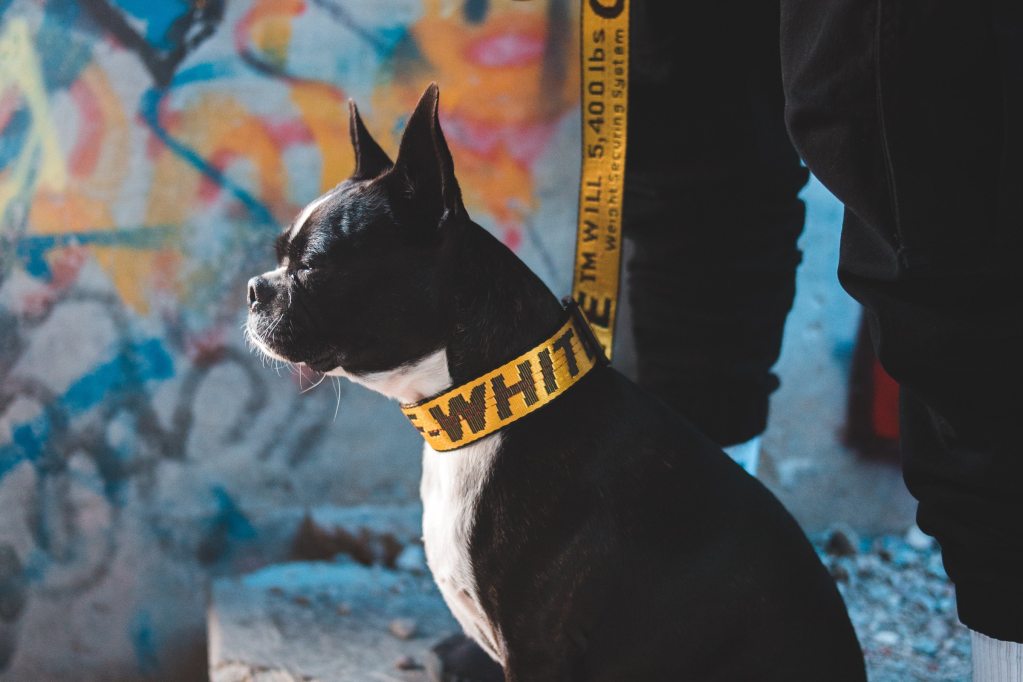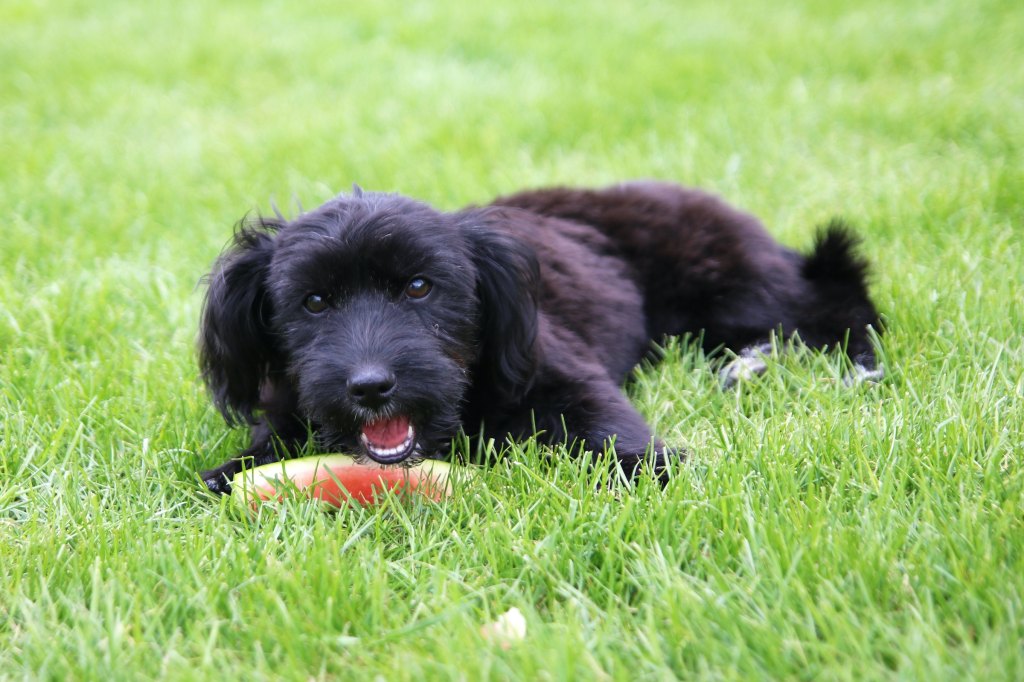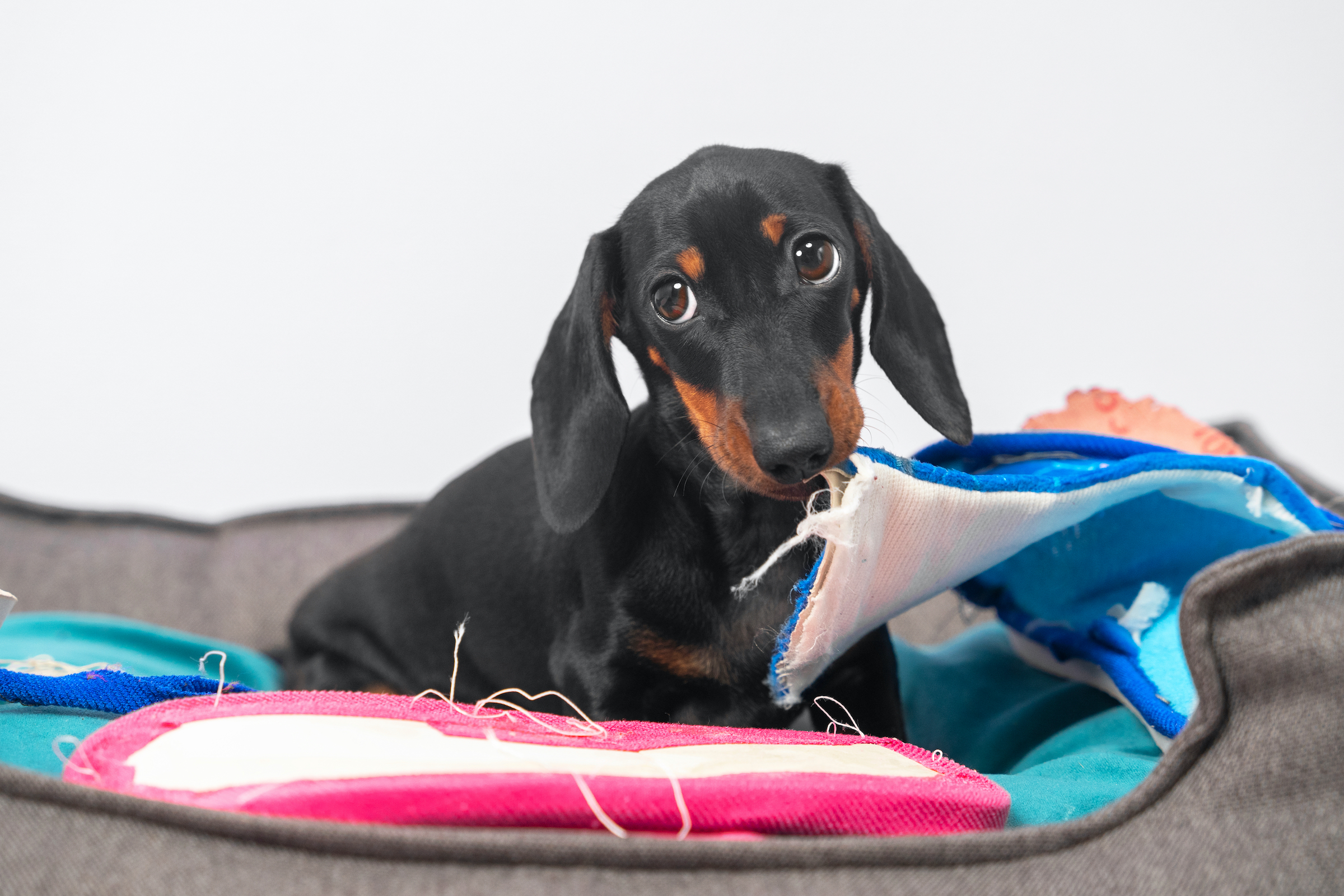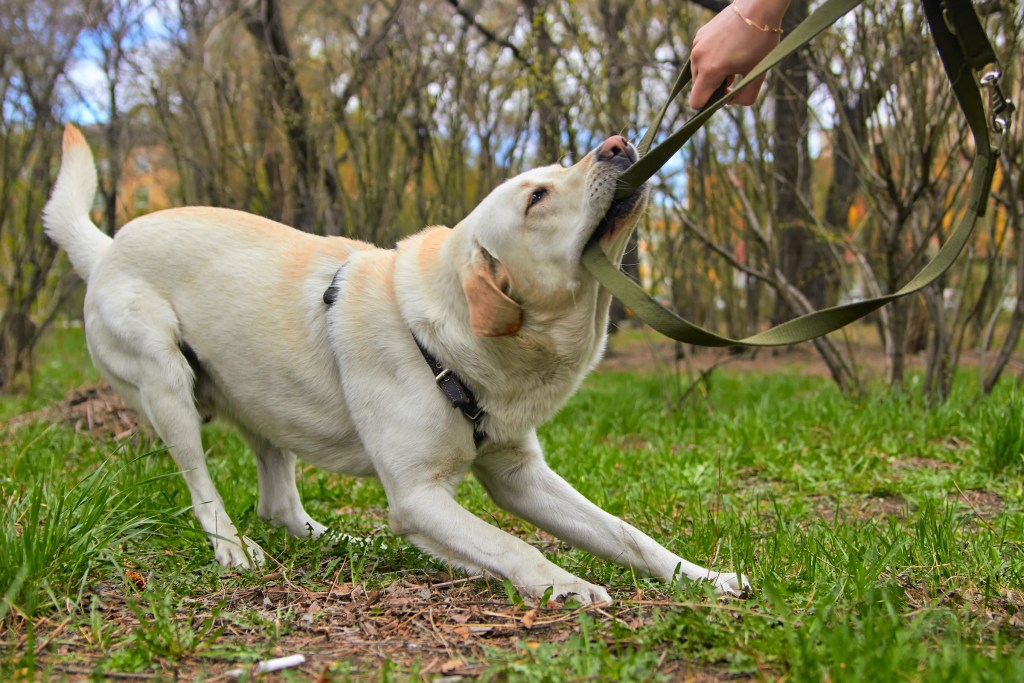
If you ever uttered the words, “Help! My dog has become disobedient,” then you’re not alone. Badly behaved dogs are more common than most people realize, and that’s actually a good thing. Because so many pet parents face the same issue, most dog owners have taken to the internet to share tips and tricks about the most effective training solutions for fearful, destructive, and even aggressive dogs.
That being said, each disobedient dog will react differently, so it may take time to discover a solution that works for you. We’re here to share a few ideas to get you started, but keeping up with your dog’s training is up to you.
At what age are dogs most disobedient?
Ugh — teenagers.
Parents of human kids can relate! Some of the most rebellious years happen during the teens for both people and dogs. When pups are between 5 to 18 months, they are starting to get more confident in their own bodies, often testing the boundaries of what they can and cannot do.
While you can’t stop your young dog’s rebellious phase, you can control how you respond to it. Staying consistent with your training is key to reinforcing expectations and showing your dog that it’s not effective to push the boundaries. No matter how cute your pup might be — you can’t give in!

How do you discipline a dog that won’t listen?
When your pup offers a behavior you’re not looking for, you can interrupt them by clapping your hands or giving a quick “No!” (Just be sure never to yell at your dog.) Redirecting your pup’s energy with an approved behavior is the best way to show what to do instead, so try to act fast when you catch your dog in the act.
If your fur baby is being stubborn while you’re trying to teach something new, it may be worth examining your communication skills. Punishing your pup will not be effective in teaching them anything — it will only make the process more negative for you both — so don’t give in to any frustration you may be feeling. There is no justifiable reason to physically or verbally punish a dog. Instead, reinforce those many positive behaviors!

Why has my dog’s behavior changed suddenly?
It can be especially frustrating if your dog, who used to know exactly what to do when asked, starts to misbehave. Apart from correcting your pup’s behaviors, you now have to figure out exactly what went wrong. Think about it — have there been any large changes in your pup’s life? Anything from losing a family member to moving their food dish to a new spot can throw off your dog’s sense of normalcy just enough.
Your precious pup could also be more distracted or afraid than normal. There are a nearly endless number of reasons why a dog won’t obey commands after previously mastering them, so don’t be afraid to enlist the help of a professional dog trainer if the problem continues.

How to train a disobedient dog
As frustrating as it can be, try your best not to assume that your dog is being disobedient. Are you certain your dog understands what you’re asking?
Kaiser K9, a nonprofit that helps connect working dogs with community service positions, reminds dog owners to teach verbal and physical cues separately when training a dog. No matter how you began the process, a pup can easily fixate on your hand gestures or other cues instead of understanding the command you’re saying. If you need, reintroducing the verbal signal may help your pup reconnect the dots.
Take a look at the rest of your obedience practice; is your dog in an overly distracting environment? Is he properly motivated by the reward you’re using? You’d be surprised to learn just how much a dog’s surroundings affect listening skills.
And how is your consistency? Annie Phenix, CPDT-KA, encourages dog owners to inform everyone in their home of the plan for training their pup. This will ensure everyone practices the same rules and doesn’t confuse your furry family member. You’d be surprised how often this can happen!

3 tips to control a disobedient dog
If you’re still in the process of training your rambunctious pup, there are a few things to keep in mind that may help you.
1. Find the best reward
If your dog doesn’t seem interested in the kibble that you’re offering as a reward, you should try a treat or a more special snack instead. Some dogs aren’t food motivated and will respond more enthusiastically to the prospect of playtime or praise. It will take some trial and error to find what works, but you’ll be so glad when you do.
2. Use their senses to your advantage
Dogs’ noses are incredibly strong and receptive, but you can use that to your advantage when training. For example, Annie Phenix suggests practicing “Leave it” with a piece of kibble, then rewarding them with an even more delicious meat reward.
3. Keep emotion in mind
You don’t do your best work when you’re stressed out of your mind, right? Neither does your pooch. If you notice your buddy seems distracted, fearful, or off in their own world, you might want to try training another time. If you can move to a location away from anything triggering — awesome — but it’s okay to wait and try again later, too. Forcing it won’t get you anywhere!
By keeping these facts and techniques in mind, you can help your stubborn pup learn to listen. It will probably take some time, as all good training does, but hopefully having a plan can allow you to approach it with patience and confidence.
Editors' Recommendations
- Why do dogs have wet noses? They’re actually really important
- Why do dogs hump everything? You might be surprised
- This is why dogs have tails, according to science
- Does your dog drink a lot of water? Here’s when you should be concerned
- Are Himalayan dog chews safe for your pet? Know this before you buy




